17 Ways to Repel Mosquitos While Hiking and Backpacking
Discover the ultimate guide to keeping pesky mosquitoes away on the trail, featuring the top tips and the best mosquito repellent for your hiking and camping adventures.

I don’t know an outdoor enthusiast who doesn’t hate mosquitos. If you don’t repel mosquitos while hiking, they can turn an otherwise perfect adventure into a nightmare. A couple of years back, I was on a multi-day canoe trip through Labyrinth Canyon in Utah. The mosquitos were so bad that anytime we weren’t in the canoe, we had to be covered from head to toe – a tall order when it was 95 degrees out. The biggest lesson was to never go canoeing during mosquito season ever again!
I’ve also been on backpacking trips where I was so damn thankful I brought my nerdy head net. Without it, I would have been eating mosquitos for lunch.
Not only are mosquitos a nuisance that can leave you with itchy welts all over your body, but they can also carry diseases like West Nile Virus. Mosquitos LOVE my partner Ryan, and now that we are also traveling with our son (who I can’t just douse with DEET), we have to take some extra steps to avoid these annoying bugs. We cover up with lightweight clothing, apply natural mosquito repellent, and even avoid buggy trails and destinations altogether until mosquito season is over.
When you’re hiking and camping, the last thing you want is for swarms of mosquitos to derail your time outside. In this post, I share my best tips on mosquito protection for hikers and campers, along with my favorite protective gear and hiking mosquito repellents so you can enjoy nature without getting hundreds of bug bites in the process.
Basic Mosquito Protection for Hikers
If you plan to go hiking, backpacking, or camping in a buggy area, you can take precautions before, during, and after your hike to deter mosquitos. Here are some tips to repel mosquitos to consider for your next adventure.
1. Research mosquito season
Mosquitos are more prevalent in certain parts of the country throughout the year. Look into when mosquito season occurs for the areas you plan to hike and camp.
In mountainous regions, mosquito season typically starts when the snow starts to melt. In lower areas, this could be late April to early June. In higher elevations, mosquito season could extend all the way into early August depending on how quickly the snow melts.
Once you know when you will likely encounter mosquitos, you can take the proper precautions to protect yourself. If your schedule is flexible, you can also avoid hiking and camping during peak mosquito season.
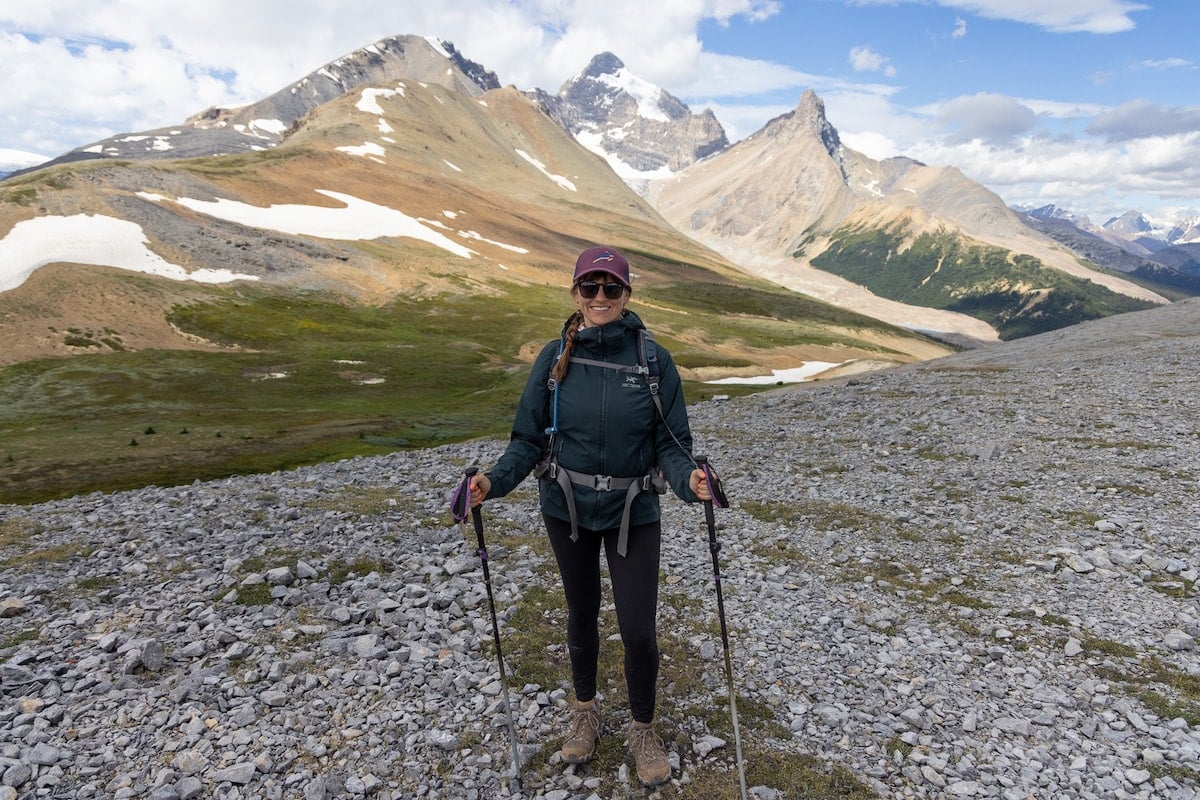
2. Avoid wearing scented products
Scented products tend to attract mosquitos. Before your hike, avoid applying sweet-smelling products like perfume, lotion, hair spray, shampoo, soap, and other cosmetics.
3. Choose open and dry trails and campsites
Mosquitos love dark, wet, boggy, marshy areas. If possible, pick open trails and campsites with lots of sunlight and dry conditions.
Although these trails can also have mosquitos, they are less prevalent than they are in forested trails that are shady and damp.
If you are backpacking, the further your campsite is from stagnant water, the better. The shoreline of ponds and lakes is where the mosquitos will be the thickest.
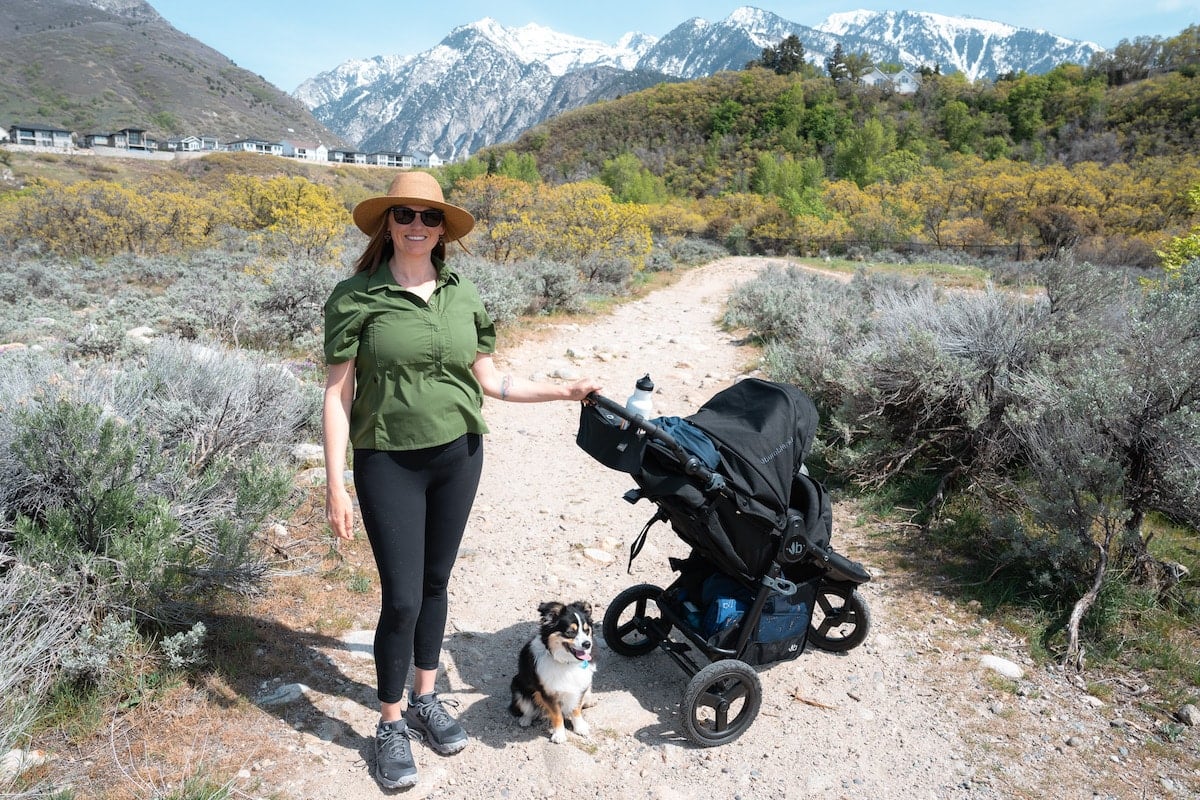
4. Apply sunscreen first
It is important to use both sun protection and mosquito repellent for hiking. If you plan to use hiking mosquito repellent as mentioned later in this article, it is important to apply sunscreen first.
Applying sunscreen before mosquito repellent maximizes the effectiveness of both, so you have the best chance of avoiding sunburns and bug bites.
5. Don’t pack pungent foods
When packing a hiking snack to enjoy on the trail, stick to simple food items that don’t have strong odors (like oranges), as the scent could attract mosquitos.
I also recommend packing your food and trash in sealed plastic bags. Odorless bags are even better.
Although some people may like to pack juice, Gatorade, or another sweet beverage to enjoy on the trail, these can attract mosquitos. If you crack open a drink at the summit, be ready for the little buggers to come your way.

6. Bring a first-aid kit to treat bites
One of the 10 essential hiking items is a first-aid kit, and it can come in handy if an insect bites you while you’re hiking.
A wilderness first-aid booklet is an excellent addition to your backpacking first-aid kit. You can use it to quickly look up how to treat common bug bites and other injuries.
7. Avoid dawn and dusk
Mosquitos tend to be most common in the early morning dawn hours and at dusk. Although these times are often cooler and more scenic with sunrise and sunset, they are the worst times to hike as far as mosquitos are concerned.
If the temperature isn’t as big of a concern for your hike, I recommend hiking during the late morning or early afternoon to avoid the prime times for bugs. If you’re backpacking and you have the time, you can sleep in a bit, staying inside your tent until after the mosquitos have died down.
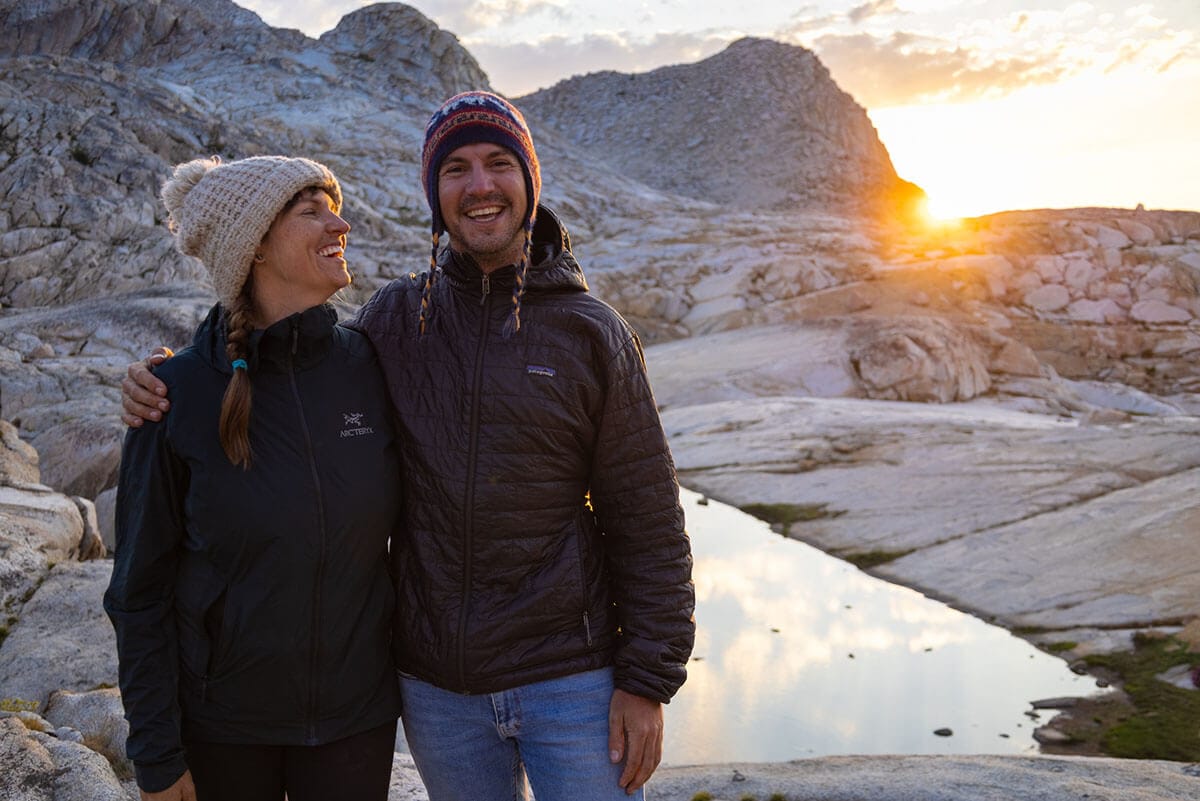
What to Wear Hiking to Repel Mosquitos
When you are hiking and backpacking, you’re going to want to dress for success when it comes to protecting yourself from mosquitos. The more you cover up, the less places you’ll need to apply mosquito repellent.
From long-sleeve hiking tops and pants to hats and sunglasses, the items you decide to wear on the trail could significantly decrease your chances of getting bit.
8. Wear long sleeves and pants
Although you may assume t-shirts and shorts are a no-brainer for hiking during summertime, the truth is that breathable long-sleeve tops and hiking pants are the best things to wear if you’re in a dense mosquito zone.
Lightweight, moisture-wicking fabrics that cover your legs and arms can keep your body cool and your skin protected from bugs and the sun. I recommend sticking to light colors because they reflect the sun and allow you to spot mosquitos hovering near you before they bite.
Pick hiking shirts and pants that fit more loosely (as opposed to skintight leggings), which are more difficult for mosquitos to bite through. However, your clothes should still fit tight around the cuffs to keep insects out.
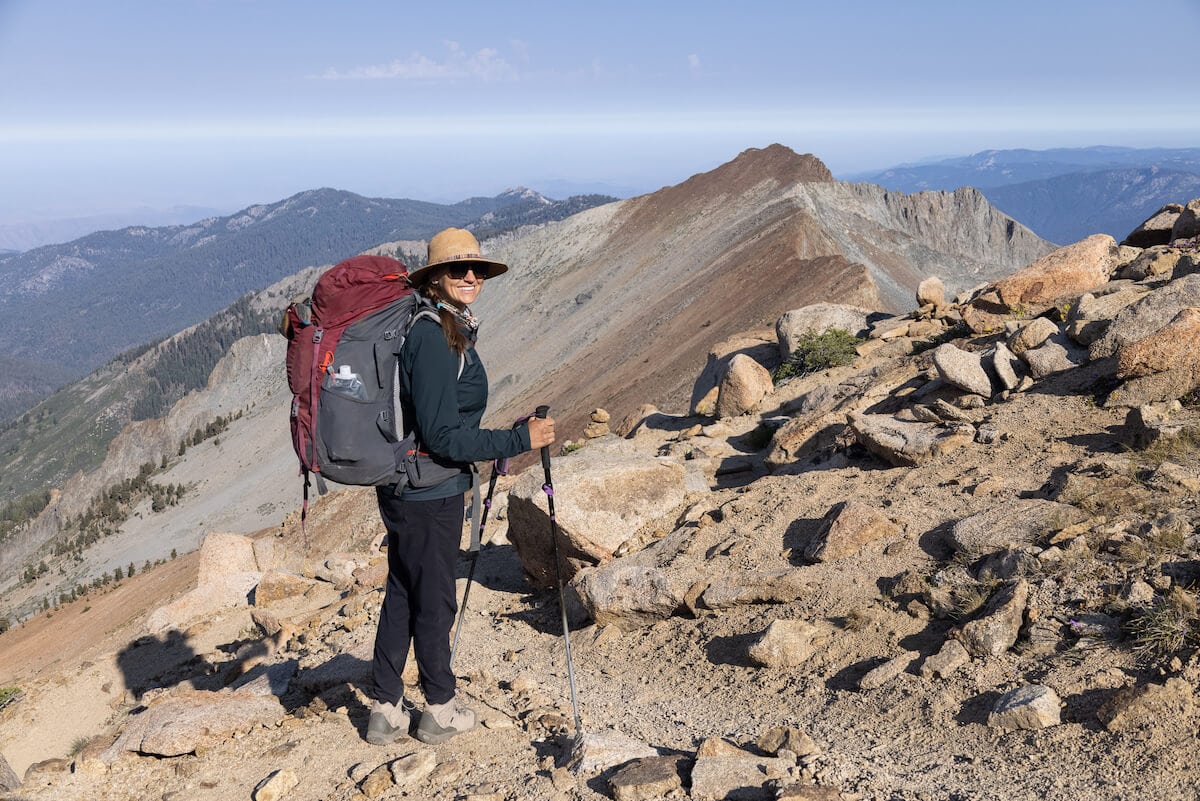
9. Protect your ankles
While this won’t make you feel very fashionable, keep your ankles and legs protected from bites by tucking your pant legs into your socks. This tip also works well when hiking in areas prone to ticks.
Another option for protecting your ankles from mosquitos on the trail is to wear lightweight gaiters. These are also practical for keeping dirt and small rocks out of your shoes.
10. Wear a hiking mosquito net
Wide-brimmed hiking hats keep the sun and bugs off your head. Consider wearing a hiking mosquito net over that if you want to protect yourself even further.
I personally use the Sea to Summit mosquito head net that you can loosely wear over any hat to prevent mosquitos from biting your face or crawling inside your eyes, nose, mouth, and ears.
Although they may not be stylish, they are practical for buggy trails. The Sea to Summit head net in particular fits loosely, is easy to see through, and you won’t even know it’s there after a couple of minutes.
And whatever you do, DO NOT buy the Ben’s brand mosquito net. I have it and it’s awful. It’s super tight and uncomfortable.

11. Wear sunglasses
Having a mosquito land in your eyeball is no fun at all. If one gets stuck in your eyelid, they are quite difficult to get it out, especially in the middle of a trail with no mirrors or running water to help you. It’s even worse if you are wearing contacts!
If you decide not to sport the hiking mosquito net, full-coverage sunglasses are another way to protect your eyes from bugs. Pit Vipers is a fun sunglasses brand with many models offering side-eye protection.
12. Cover your neck
Your neck is another exposed area that is easy to accidentally forget to protect from mosquitos while hiking. I recommend wearing a bandana or Buff around your neck.
They even make a Buff CoolNet UV+ Insect Shield designed for hiking and backpacking on trails with heavy mosquitos. These Buffs are treated with an odorless insect repellent, which repels mosquitos for up to 70 washes.
Wearing a bandana or a Buff around your neck will help protect it from both sunburn and mosquitos. For added protection, you can apply a few drops of Oil of Lemon Eucalyptus directly to the cloth.

Best Mosquito Repellent for Hiking
In terms of mosquito repellent for hiking, you can choose between more natural products and ones that contain DEET or Picaridin. While it is ultimately your choice, I try to use natural hiking mosquito repellent as much as possible and only reach for something stronger if the trail is extremely buggy or the insects are known to carry serious diseases like Lyme-carrying ticks or malaria-carrying mosquitos.
No matter which you choose, apply mosquito repellent to exposed areas of skin, including your face, neck, hands, wrists, and ankles. Reapply throughout your hike as needed, especially when working up a sweat. Be careful not to get it in your eyes!
13. Use natural mosquito repellent when possible
To limit repeated synthetic chemical exposure while I’m traveling in my van, I like to use plant-based, DEET-free hiking mosquito repellent. Look for products made of Oil of Lemon Eucalyptus with a 30 to 40 percent concentration.
My go-to natural mosquito repellent for hiking is typically Natrapel because it is top-rated, has a pleasant smell, and doesn’t have any questionable ingredients. Again, I only rely on natural repellents when I’m not worried about the bugs carrying any serious diseases.
Natural repellents need to be reapplied more often than synthetic mosquito repellents, and the CDC doesn’t recommend using Oil of Lemon Eucalyptus on children under 3 years old.
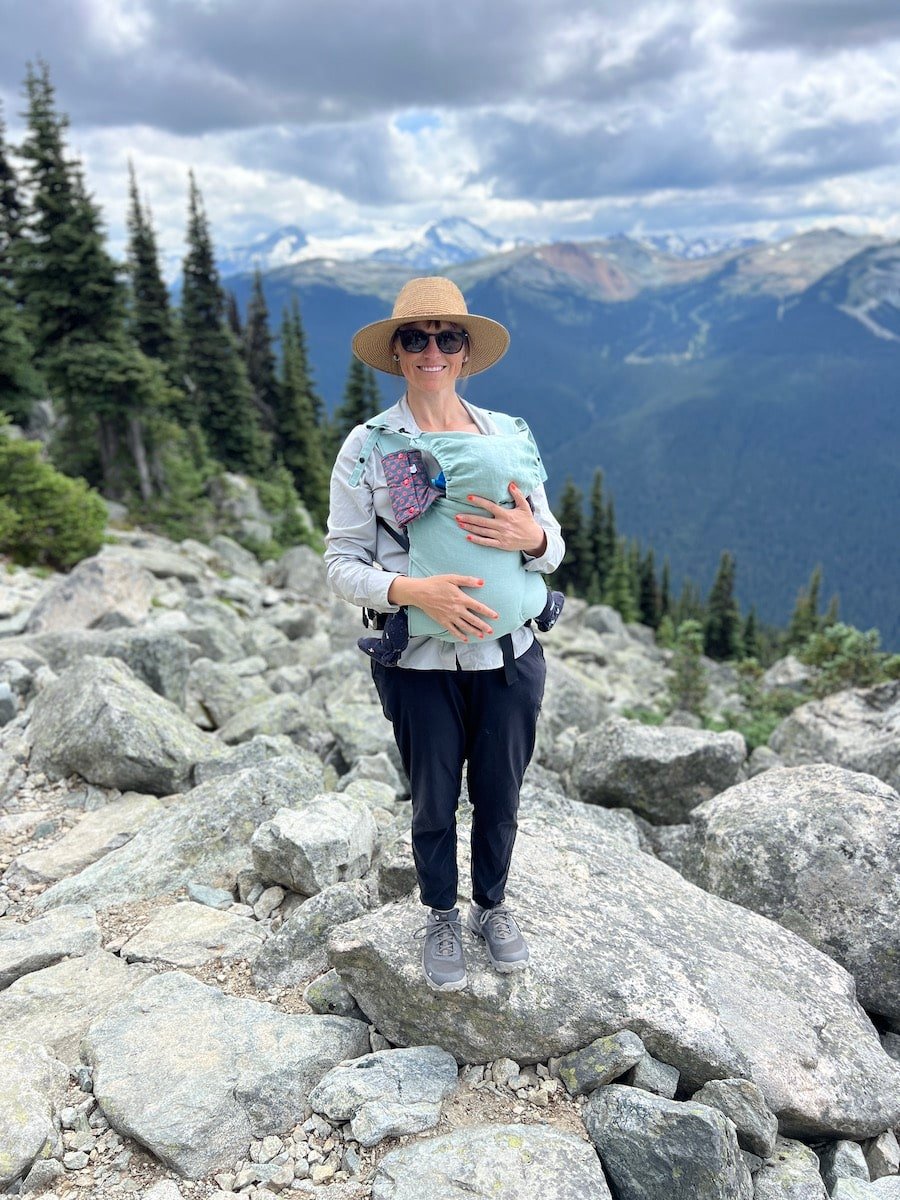
14. Apply DEET or Picaridin if necessary
There are four instances where I’ll opt for DEET or Picaridin:
For the best mosquito repellent for hiking with DEET, choose one with a 7-30% solution. The higher the concentration, the more powerful it will be and the longer it will last.
If you are trying to protect yourself against ticks or need all-day protection, 20-30% DEET is recommended. The Environmental Working Group discourages concentrations higher than 30% as it can cause irritation. If you are concerned about the safety of DEET, I highly recommend you read this EWG article about insect repellents which dispels a lot of myths about DEET.
After applying, don’t let your dogs lick you as it can be harmful for them to ingest DEET applied to skin or gear. Also wash your hands when you’re done applying it to avoid getting it in your eyes or on your food, and take a shower to wash off the hiking mosquito repellent as soon as you get home.
While some hikers recommend applying DEET to your hiking gear instead of your skin, it can damage plastic, synthetic fabrics, and rubber products. Permethrin, which is discussed below, is a much better option for this.
If you have sensitive skin, Picaridin is a DEET alternative that is shown to be just as effective, but less irritating with fewer long-term concerns. It also doesn’t have any smell. Experts recommend 10-20% concentration, with 20% being more effective for ticks and West Nile mosquitos.
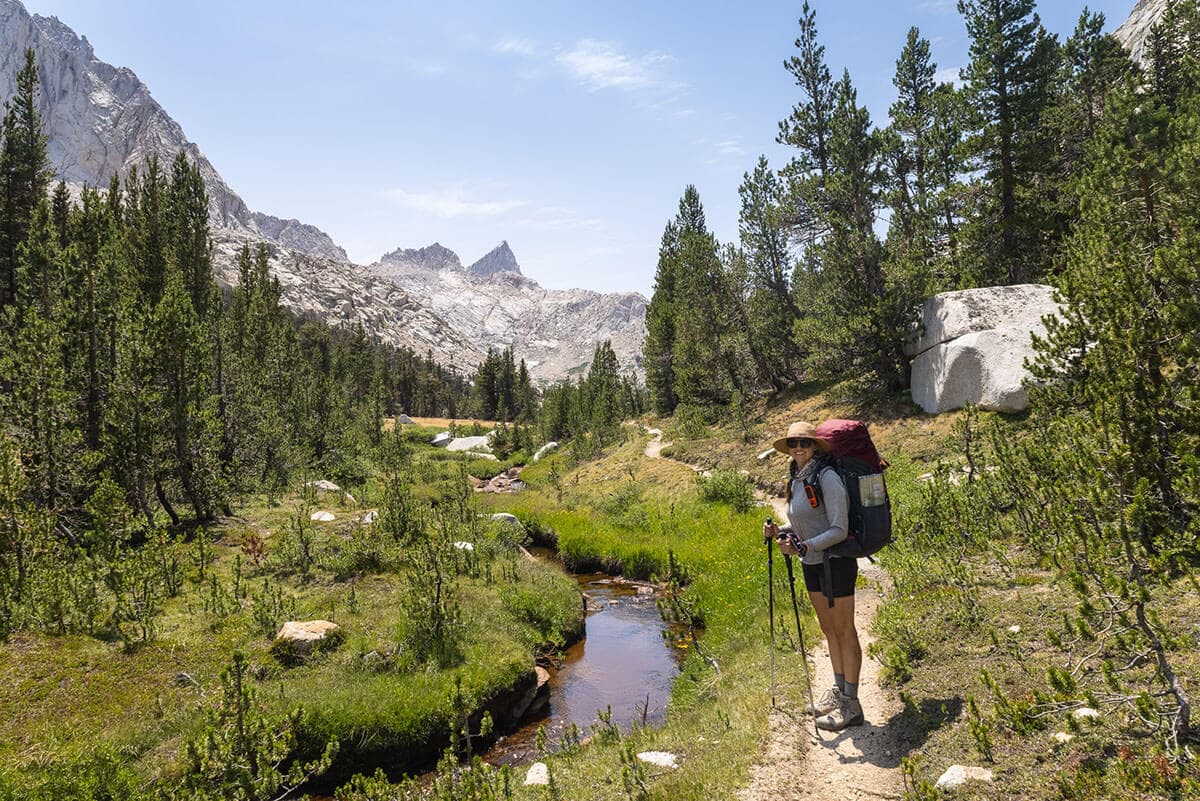
15. Wear a band or clip
If you prefer not to spray yourself with mosquito repellent for hiking, they also make mosquito repellent bands that you can wear on your wrists and ankles, along with clips that you can attach to your hiking pack. These aren’t as effective as the repellents mentioned above but can be helpful when combined with other protective measures.
Treating your Clothing and Gear with Permethrin
Before you set out for a hike, another way to repel mosquitos while hiking is to treat your clothes and gear with an insecticide called permethrin, which kills mosquitos on contact. The spray is affordable and easy to use.
One thing to keep in mind is permethrin is a registered insecticide rather than a repellent meaning it’s designed to kill insects rather than keep them at bay.
Some studies have found a link between permethrin and cardiovascular issues as well as it being an endocrine disrupter. This Consumer Reports article gives a good overview of the pros and cons of permethrin.
16. Apply permethrin on apparel and gear
If you purchase permethrin formulated for fabrics, you can safely treat your clothes, shoes, hats, and gear before you set out on the trail.
Hang your apparel and gear outside in a well-ventilated area away from animals on a clothing line or rack. Spray the items thoroughly, then flip them over to cover both sides. Give everything time to dry before you put it on.
The permethrin treatment lasts about 5-6 washing cycles before you need to treat your items again. You can also purchase clothing already treated with permethrin.

17. Buy pre-treated clothing
If you don’t feel like taking the time to apply permethrin yourself, you can buy clothing that has been pre-treated. This also helps reduce the risk of skin coming into direct contact with permethrin.
Permethrin-treated clothing lasts through multiple washes and has an even coating, which can be more difficult to achieve when you’re treating your clothes yourself.
One brand that designs outdoor apparel treated with permethrin is ExOfficio. Their BugsAway line includes hiking clothes like button-down shirts, pants, jackets, t-shirts, socks, shorts, tank tops, skorts, and leggings.
READ NEXT
Before you head out on your next hike, check out these other helpful articles:
Save this post to Pinterest
Do you have any questions on how to repel mosquitos while hiking or an experience you’d like to share? Let me know in the comments below!




